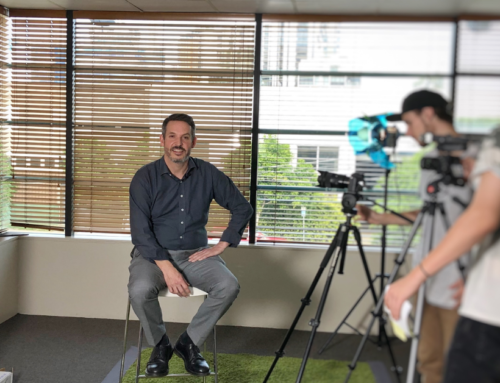|
|
“Who cares what I think? Especially when it comes to hearing my side of a road rage story.” Well that is what I figured when I was nearly run off a suburban road by a ute full of tradies. They didn’t care for my opinion. They just yelled at me for being in their way. So, rather than yell my opinion at them, I flipped my perspective and found a more powerful result.
Let me set the scene …
I was riding my bicycle on my usual path to work. It is only a 15 minute ride. I’m not a slipstream MAMIL (Middle Aged Man In Lycra) nor am I a spritely curb hopper. In fact, I am a medium-paced rider wearing my office attire. For me speed equals sweat, so that is not on.
I was riding with a friend. The road had two lanes in our direction so we chose to legally ride side by side in the left lane. As the near antiquated art of chivalry would require, I rode on the outer-side of my friend so that she would be ‘protected’ by me.
We soon had a ute speed past us on the right and then swerve abruptly into our lane just missing me. They had narrowly avoiding hitting a car in the right lane, which was stopped at the tail of a bank of traffic. The offending car was soon stopped themselves in the left lane which was also banked up with traffic from the lights ahead.
From my perspective, he had just shown a disregard for safe and sensible driving by speeding when he was approaching stationary cars in traffic. He sharply swerved into our lane and narrowly missed me and the stationary car in the right lane.
As the two of us rode past, now slower and on the footpath, the driver decided he’d let us know that in his opinion we were an annoyance to him (he did say it a little more colourfully). His suggestion for us, was that we should “get off the …. road!”.
As he was hemmed in by traffic, and I was mobile, I had an opportunity to engage with him. Some options crossed my mind:
- Should I briefly let him know that I disagree with him, perhaps using international sign language?
- Should I confront him, give him my opinion and tell him off for what he has done wrong?
Rather than ‘flipping him the bird’ or ‘giving him a bit of what for’, I decided to try and see things from his perspective, so that he might actually hear what I wanted to convey.
I rode back toward the ute, though stayed on the foot path so as not be seem too aggressive. I didn’t discuss any of his bad behaviour or unsafe driving. Instead, I addressed his request of me, which was to ‘get of the road and ride on the foot path’.
I let him know that the law had only recently changed to allow cyclists to ride on the foot path, but that we have always been allowed to ride on the road. Furthermore, if there is more than one lane, cyclists are allowed to ride two abreast (side by side). This information by itself is still very much about me, my rights and my privileges, but I turned it around to say that I wanted to let him know about these laws because if he were to hit me, it would in fact be he who was breaking the law. It would be he who jeopardises his drivers licence and puts himself in a position to be fined.
To my surprise, the driver, who was clearly a bigger man than me, and his three passengers who were equally well built, all stayed in the car. They all tuned down their rumblings and seemed to take on what I had to say. On the face of it, there was certainly a chance that I might have been in for a bit of a rough up, but instead he ended up returning a disgruntled, but knowing nod and we went our separate ways.
I reframed my response to an abusive outburst in an attempt to consider the other person’s perspective. By flipping perspective I think I managed to turn the morning’s road rage into a learning opportunity and hopefully made the roads safer through education that focused on what was in it for the other person.
So, what can we learn?
Understanding someone else’s perspective is a key part of the core design principle of empathy. It is an essential part of taking a human centred approach to problem solving or a design project. The business world has well articulated benefits to this approach. The challenge for me as a design thinker is to ensure I use empathy to its greatest benefit in all aspects of my life.
Often in life we are presented with situations where we experience ‘amygdala hijack’ – fight or flight mode. This can present a fantastic challenge to recode your thinking and switch back to conscious thought to empathise and try to understand situations from other’s perspectives. I know I’ll have a more positive outcome when I flip my perspective and not flip the bird. Can you get passed your immediate response and flip your perspective to see things from others’ point of view?



